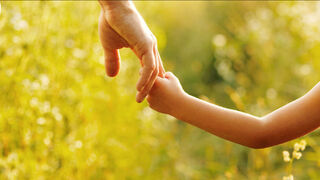Bias
5 Core Lessons from the Science of Kindness
4. Who we decide to be kind to is influenced by bias.
Posted November 11, 2021 Reviewed by Michelle Quirk
Key points
- It is important to focus on the benefits, not the effort, to motivate us that being kind is worth it.
- Older people seem to be more willing to be kind.
- We should reflect on how our kindness might be biased to help particular people.

“Wherever there is a human being, there is an opportunity for a kindness.” wrote the philosopher Lucius Annaeus Seneca. But people are not kind all of the time; selfishness resides in all of us. What can we do to be more kind?
Being kind is more important now than ever. As we write, the 26th United Nations Climate Change Conference has just finished, heralded as one of the last chances for world leaders to save the globe from dangerous levels of heating. In parallel, coronavirus is still claiming lives in many countries. From getting vaccinated to wearing a mask, there are many small actions we can take to protect ourselves and others. Therefore, understanding what we can do to be more kind is critical. Only then can we promote positive change around the world and help address these pressing global challenges.
Following are five lessons from psychology and neuroscience about what makes us kind, and the possible barriers to our good intentions.
1. Is It Worth It?
The word kindness brings up thoughts of donating to charity, holding open doors for strangers, helping out colleagues with their work. One aspect that unifies most kind acts is that they are effortful. However, effort is aversive—humans and other animals generally avoid it. So why are we kind if it requires so much work? Ourselves and other researchers have shown that people are indeed willing to put in physical effort to help other people. We don’t do so as often as when our effort benefits us instead, but we will do it, particularly if the benefit for the other person is large.

Research shows that specific parts of the brain represent how effortful an act is and these are linked to overcoming the hard work needed to help others. Next time we are faced with the opportunity to help, it is important to focus on the benefits, rather than the effort, to motivate us that being kind is worthwhile.
2. Can We Learn to Be Kind?
Another essential aspect of being kind is being able to learn that what we did helped another person. Research has shown that when we are learning to help someone else, there is a part of the brain in the cingulate cortex that increases its activity only when we are being kind to someone else, and not when we are helping ourselves. This suggests that we might have specific parts of the brain for being kind.
In light of this research, another lesson is that when we make a decision to be kind, we should focus on the positive outcomes that our act has for someone else, as this increases the likelihood we will do it again. Similarly, if someone does something kind for you, it’s great to let them know about the positive impact it had as part of saying thank you.
3. Does Being Kind Change as We Get Older?
One factor that affects all of us is age, and this has come up in recent research as important for kindness too. Older people seem to be more willing to be kind, whether that is putting in effort for others, learning about rewards, donating to charity, and even engaging in higher daily step counts to help. We recently found that this link between age and being kind was evident around the world, in a huge sample of more than 44,000 people across 67 countries. Therefore, our kindness might be changing across our lives. Younger people especially could reflect on these changes, now and as they get older, to maintain and even increase levels of kindness.
4. Who Are We Kind to?
Older people seem to be more kind than younger people, on average. However, who we are being kind to is also a critical predictor of our willingness to help. In the global aging study, although we found older adults were more willing to donate to charity generally, this depended on who their donation would help. When we compared donations to a charity helping people in one’s own country with a charity helping people abroad, we saw that the older adults only gave more in their own country but gave less abroad, compared to younger adults.
This effect, known as an in-group bias or in-group favoritism, is something that seems to develop early in life with young children displaying strong preferences for helping their own gender and race. We showed that this bias could get even stronger as we age. When we are next considering being kind, we should reflect on how our kindness might be biased to help particular people, so that we can be more equal in who we help.
5. Are People Different in How Kind They Are to Others?
Age seems to be an important factor in being kind to others. But, at any age, are there particular traits that affect our kindness? Several researchers have shown that an important difference between people is levels of what are known as psychopathic traits—lack of empathy, remorse, and guilt.
Both when we are putting in effort to help others and when we are learning whether we have helped someone or not, our ability to be kind seems to vary on a spectrum with our levels of psychopathy. However, on the flip side, people who are higher in empathy are faster at learning how their actions help others and more willing to put in effort to help. Cultivating our levels of empathy, and minimizing any traits linked to psychopathy, are therefore essential for the tendency to be kind.
LinkedIn image: Daisy Daisy/Shutterstock. Facebook image: Mangostar/Shutterstock
References
Lockwood, P. L., Wittmann, M. K., Nili, H., Matsumoto-Ryan, M., Abdurahman, A., Cutler, J. L., Husain, M. & Apps, M. A. J. (2021). Distinct neural representations for prosocial and self-benefitting effort. bioRxiv.
Cutler, J. L., Wittmann, M. K., Abdurahman, A., Hargitai, L., Drew, D., Husain, M & Lockwood, P. L. (2021). Ageing is associated with disruptions in reinforcement learning whilst learning to help others is preserved. Nature Communications.
Cutler, J. L., Nitschke, J. P. Lamm, C. & Lockwood, P. L. (2021). Older adults across the globe exhibit increased prosocial behaviour but also greater in-group preferences. Nature Aging.
Lockwood, P. L., Abdurahman, A., Gabay, A., Tamm, M., Drew, D., Husain, M., & Apps, M. A. J. (2021). Ageing increases prosocial motivation for effort. Psychological Science.
De Brito, S. A., Forth, A. E., Baskin-Sommers, A. R., Brazil, I. A., Kimonis, E. R., Pardini, D., ... & Viding, E. (2021). Psychopathy. Nature Reviews Disease Primers.




